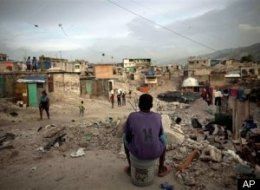It is now eight months since the devastating earthquake struck Haiti virtually leveling its capital Port au Prince. It’s not any better. One of the biggest obstacles to progress is the ruble and there is no one in charge.

PORT-AU-PRINCE, Haiti – From the dusty rock mounds lining the streets to a National Palace that looks like it’s vomiting concrete from its core, rubble is one of the most visible reminders of Haiti’s devastating earthquake.
Rubble is everywhere in this capital city: cracked slabs, busted-up cinder blocks, half-destroyed buildings that still spill bricks and pulverized concrete onto the sidewalks. Some places look as though they have been flipped upside down, or are sinking to the ground, or listing precariously to one side.
By some estimates, the quake left about 33 million cubic yards of debris in Port-au-Prince – more than seven times the amount of concrete used to build the Hoover Dam. So far, only about 2 percent has been cleared, which means the city looks pretty much as it did a month after the Jan. 12 quake.
Government officials and outside aid groups say rubble removal is the priority before Haiti can rebuild. But the reasons why so little has been cleared are complex. And frustrating.
Heavy equipment has to be shipped in by sea. Dump trucks have difficulty navigating narrow and mountainous dirt roads. An abysmal records system makes it hard for the government to determine who owns a dilapidated property. And there are few sites on which to dump the rubble, which often contains human remains.

Recent Comments